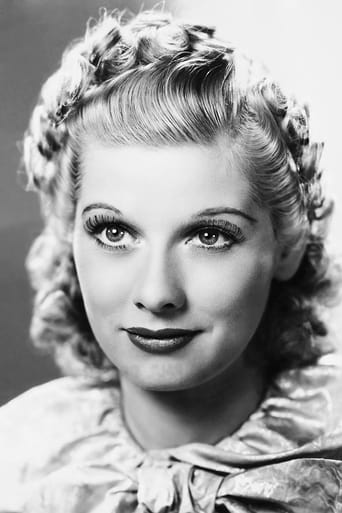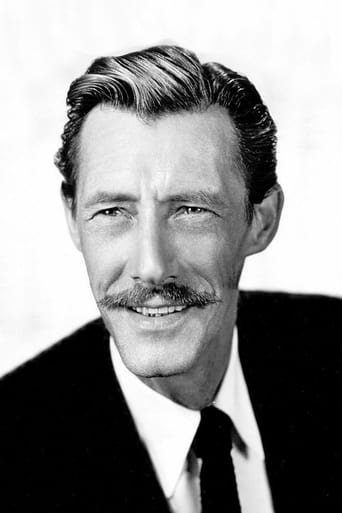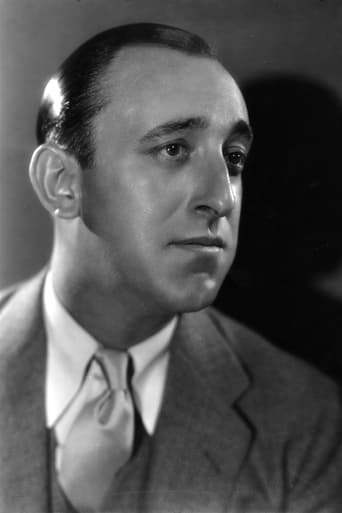ThiefHott
Too much of everything
Acensbart
Excellent but underrated film
AutCuddly
Great movie! If you want to be entertained and have a few good laughs, see this movie. The music is also very good,
Mandeep Tyson
The acting in this movie is really good.
mark.waltz
Everybody has some drama in their life, and for this "Motel 6" variation of "Grand Hotel", it is first set aboard a tin can of a puddle jumper then somewhere deep in the jungle with rumored cannibals nearby. The plane goes down, dramas amongst the crew and passengers ensue, then the group must decided who will stay behind and who will return thanks to the inability of the repaired plane to make it over a mountain range with everybody aboard. Among those on the plane are wanted criminal Joseph Calleia, tired party girl Lucille Ball, socialite Wendy Barrie and elderly couple C. Aubrey Smith and Elisabeth Risdon. They are lead by pilot Chester Morris who tries to keep it all together.Tense and often nail biting, this ranks as one of RKO's best B movies. It shows future funny girl Lucille Ball off to be quite a fine dramatic actress which makes me wonder what her career might have been like had she not moved into radio then T.V. to gain a reputation as a comic. Smith and Risfon are touching as a devoted, long married couple with issues of their own, reminding me of Ida and Isador Strauss from the "Titanic" legend. A pretty decent remake, "Back From Eternity" came out during the last days of RKO and is well worth seeing too.
classicsoncall
I'm happy to say it was worth the effort to get up early this morning to catch this nifty programmer on Turner Classics. I was drawn to the title when I scanned the cable listings and saw Lucille Ball's name in the cast. Her character was described as an ex-prostitute in the brief description of the film, but if I hadn't read that, I don't know if I would have drawn that conclusion from watching the story. She portrays hard luck gal Peggy Nolan who happens to mention that she's had trouble with men in the past, but that could mean anything. Anyway, I've always thought she was a gorgeous actress prior to her Lucy days, and so you've got another picture here that bears that out, particularly in her first appearance on screen looking like a well to do society woman.The story utilizes an often used plot in which an airplane goes down in bad weather and crash lands in a remote jungle setting. The passengers on board come from various walks of life, including an 'anarchist' (Joseph Calleia) being escorted to his home country to face execution by hanging. As the story progresses, I got the impression that the writers were expressing a social and political statement with the motivations of their characters, and to get an excellent overview of those dimensions I would direct you to the review on this board by 'dougdoepke'; it's very well reasoned and articulated.For those of you just looking for a good picture, there's that too. There are some confusing elements though that distracted from the story a little for me. For example, it was mentioned that the crash took place in the Amazon, but if the flight's original destination was Panama City, the plane would never have gotten near South America. Then there's that business about jungle headhunters, and I'm not up on my headhunter lore, but that just didn't strike me as credible. I'll look it up though.Some of the character turns in the picture are predictable enough. Pilot Bill Brooks (Chester Morris) assumes leadership of the stranded group with an able assist from co-pilot Kent Taylor. Under pressure, affluent businessman Ellis (Patric Knowles) takes to the bottle and has a falling out with fiancée Alice Melbourne (Wendy Barrie). Perhaps the most interesting couple in the mix are the Spenglers (C. Aubrey Smith and Elisabeth Risdon), adjusting to their situation with an admirable grace and equanimity knowing that they may never make it back to civilization. If there's a twist to the story, it's the way villain Vasquez (Calleia) emerges to shape the outcome when it becomes clear that the repaired plane can only depart with a total of five on board. He argues for a logical decision to choose who'll survive, reasoning that otherwise, the 'wrong people might win'. Interestingly, I would have picked the same players to make it back home.
CelluloidDog
A pleasant surprise of a film! It has a common theme of surviving a disaster (in this case, a plane crash but other themes might be shipwreck or being stranded in the desert) and trying to survive against all odds. Not everyone can make it out so it's a study in character and sacrifice. The jungles are lush and the natives are a bit stereotyped, however back then I think not due to the producers and directors but to captivate a less sophisticated audience. With Lucille Ball, John Carradine in early roles, it's a curiosity and well-acted. The budget was small and it's called a B movie, but in many ways, it's not. 8 for acting and plot/influence.
dougdoepke
No need to recap the plot. Despite the recognizably stock characters (resourceful pilots, fallen woman, respectable woman, et al.), there's something nightmarish about the movie as a whole. Maybe it's the succession of calamities filmed in nourish shadow that's so unsettling. Certainly the jungle creates an exotic air, which could only have been done on a sound stage and in "artistic" fashion as one reviewer sagely observes. Then too, such compelling values only emerge in b&w, with its angular shadows and shades of gray—the stuff of nightmares. Actually, the plot with its character types undergoing the rigors of survival rather resembles the John Ford classic of the same year, Stagecoach (1939).One interesting angle is what the movie reveals about the politics and changing perceptions of the rebellious Depression Era. The passengers and crew divide basically into two camps following the crash—those who join the collective effort to survive and those who don't. Tellingly, three types of traditional rejects—the fallen woman (Ball), the underworld character (Jenkins), and the political radical (Calleia)-- join in and help the collective effort. In fact, the radical sees this cooperative group as a small-scale embodiment of his (socialist?) aims and has no desire to return to "civilization". At the same time, two category types don't join in or help. Also tellingly, both types represent what can be called the "establishment" of the day— the rich man's son (Knowles) and the cruel cop (Carradine). Each stays aloof from the others. Naturally we're led to sympathize with the other group, the collective, since it includes the obviously "good" people—the pilots, the professor and wife, and the boy, (Barries' respectable woman is more ambiguous since she's initially allied with Knowles).The fact that the "rejects" join into what might be called the new "cooperative society" implies that they only became rejects because of problems in the old society that Knowles and Carradine represent. As part of a new social fabric, their "truer" characters can be understood to emerge and in positive fashion. Ironically, each is given a new lease on life because of the crash and the new social relations that emerge. In contrast are those who don't join in. As a privileged offspring of the wealthy class, Knowles persists in the selfishly indulgent habits (boozing) he's used to, while Carradine's abusive cop can't adjust to his loss of authority in the new societal set-up. On his own, neither of the two can survive the new circumstances, which is Carradine's fate, alone in the jungle, while the helpless Knowles again becomes a parasite on the work of others.Now, I don't think the movie stands as a full-blown allegory of the time; however, there's enough resemblance between the character types and national political trends to draw certain parallels. Clearly, Knowles and Carradine parallel the pre-New Deal establishment of entrenched wealth, seen here as parasitical, cruel and resistant to the more cooperative New Deal society ( e.g. creation of social safety net; rise of worker rights). The plane crash mirrors the stock market crash (1929) in removing the power base of the old regime and casting its two survivors adrift, but at the same time, creating fresh opportunities for change. Of course, radical political thought (socialist, communist, anarchist) was more prominent than usual during the unstable Depression and is treated sympathetically in the character of Calleia. He not only commits an act of noble self-sacrifice, but also shapes the future by deciding who stays and who goes. It's also revealing that he and the professor who "understands" him form a bond, paralleling the New Deal's alliance with the academically based Brain Trust that guided administration policy. Both men are seen in the movie as sacrificing themselves for a better future for others.We can't be sure what the future for the Five who come back will be, and I agree that the movie ends too abruptly. The parallels also trail off at this point, though Jenkins' softened underworld character could stand-in for the public's general deference toward bank robbers in particular (Dillinger, Bonnie & Clyde). To me, Ball's shady lady has no particular 30's parallel, though I may have missed something. Where the allegory really breaks down is with the conspicuous absence in the movie of a working class counterpart. Of course, worker demands are what drove societal change during the Depression period. In the movie, the pilots might qualify, but they're really more non-partisan technicians than driving agents of change. In a sense, the counterpart doesn't emerge until after the plane crash when the good people go to work.I suppose it's not surprising that the movie slants in an anti-establishment direction given Dalton Trumbo's participation as a writer. Later blacklisted as one of the vilified Hollywood Ten, Trumbo made no secret of his radical alignment, and I suspect the parallels in the film reflect many of his leftish sympathies. However that may be, the movie provides both a suspenseful drama and a telling glimpse of changing politics and perceptions, and is well worth catching up with.





